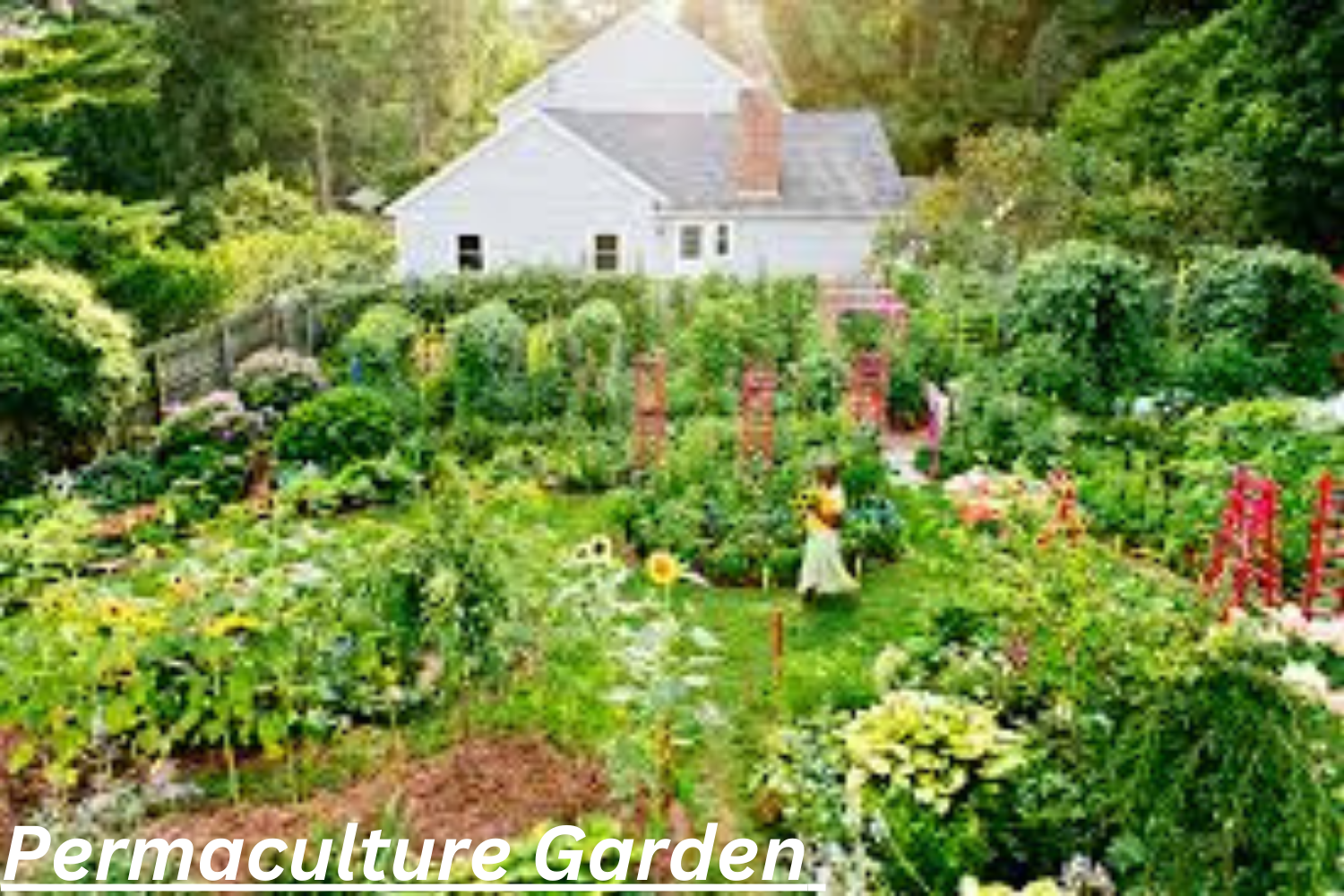Imagine stepping into a garden that not only nourishes your body but also heals the planet. Welcome to the world of Permaculture Garden, where sustainable practices meet natural beauty. It’s more than just growing food; it’s about creating a thriving ecosystem right in your backyard.
Whether you’re an experienced gardener or just starting out, this ultimate guide will take you through everything you need to know about building and maintaining your own permaculture garden. Get ready to explore innovative design principles, discover plant choices that work in harmony with nature, and learn how to integrate animals into your green oasis.
Let’s dig deeper into what makes a permaculture garden unique and how it can transform not only the way we grow our food but also our relationship with the environment. Your journey towards sustainable gardening starts here!
What is Permaculture Gardening?
Permaculture gardening is a holistic approach to cultivating food and plants in harmony with nature. It draws inspiration from natural ecosystems, allowing gardeners to create self-sustaining environments.
At its core, permaculture focuses on designing gardens that mimic the relationships found in nature. This means considering factors like soil health, water management, and plant diversity. The goal is not just to produce crops but to establish resilient systems that thrive over time.
In a permaculture garden, every element has a purpose. Plants may support each other through companion planting while attracting beneficial insects or improving soil quality. Think of it as crafting a living puzzle where each piece contributes to the overall balance.
This method emphasizes long-term sustainability rather than quick fixes. By fostering biodiversity and minimizing waste, you can cultivate an ecosystem that benefits both you and the environment for years to come.
The Principles of Permaculture Gardening
Permaculture gardening is built on core principles that guide sustainable practices. These principles emphasize the importance of observing and interacting with nature. Understanding local ecosystems allows gardeners to design systems that work harmoniously within them.
Each element in a permaculture garden has a purpose, promoting diversity rather than monoculture. This biodiversity enhances resilience against pests and diseases while providing different food sources.
Utilizing renewable resources is another principle. Focused on minimizing waste, permaculture encourages composting and recycling materials whenever possible.
Every action taken should be fair and equitable, benefiting both people and the environment. By fostering relationships among plants, animals, and humans alike, permaculture cultivates a community-oriented approach to gardening.
Valuing small-scale solutions promotes efficiency over large-scale interventions. Often simple techniques yield significant results when integrated thoughtfully into the garden’s design.
Benefits of Permaculture Gardening
Permaculture gardening offers a wealth of benefits for both the environment and your well-being. One significant advantage is its emphasis on biodiversity. By cultivating various plants together, you create a balanced ecosystem that naturally controls pests and promotes soil health.
Another perk is the reduction in labor and resources needed over time. Once established, permaculture gardens often require less maintenance than traditional gardens due to their self-sustaining nature.
Additionally, growing your own food reduces reliance on store-bought produce. This can lead to fresher meals while minimizing carbon footprints associated with transportation.
Furthermore, engaging in this type of gardening fosters community connections. Many people share tips, seeds, or even harvests with neighbors, creating bonds that enrich local networks.
Permaculture practices encourage mindfulness and connection with nature. Tending to a thriving garden can be incredibly fulfilling for both body and mind.
Designing Your Permaculture Garden
Designing your permaculture garden starts with observation. Spend time in your space. Understand the sunlight patterns, wind directions, and water flow. These factors will guide your plant placement.
Next, consider zones for efficiency. Place frequently used plants closer to your home while allowing less demanding species to thrive further away. This minimizes effort and maximizes yield.
Layering is another key element. Think vertically by incorporating tall trees, mid-height shrubs, and ground cover plants. This creates a diverse ecosystem that supports various wildlife.
Don’t forget about pathways! Design them to facilitate easy access while preserving soil health. Use natural materials like wood chips or gravel for a sustainable touch.
Embrace spontaneity within structure! Allow nature’s unpredictability to enhance your garden’s growth journey while adhering to permaculture principles of harmony and balance.
Choosing Plants for a Permaculture Garden
Choosing plants for a permaculture garden is both an art and a science. Diversity is key. The more varied your plant selection, the healthier your ecosystem will be.
Start with native plants. They thrive in local conditions and attract beneficial insects. This helps create a balanced environment naturally.
Consider companion planting too. Some plants enhance each other’s growth or repel pests when grown together. For instance, tomatoes love basil’s company while keeping aphids at bay.
Don’t forget about perennials! These hardy plants return year after year without needing to be replanted, providing stability and reducing labor over time.
Incorporate layers into your garden design: tall trees, mid-height shrubs, ground covers, and root vegetables all play their part in maximizing space and resources efficiently.
Aim for synergy among your choices—each plant should contribute to the health of the others while fulfilling its role in the ecosystem you’re nurturing.
Maintaining and Caring for Your Permaculture Garden
Maintaining a permaculture garden involves observation and interaction. Regularly check your plants for signs of pests or diseases. Healthy ecosystems can often self-regulate, but early detection is key.
Mulching plays a vital role in moisture retention and weed suppression. Organic materials like straw or wood chips work wonders here.
Watering should be done deeply and less frequently to encourage deep root growth. Rainwater harvesting systems can be an excellent addition to support this practice.
Composting is essential for enriching the soil naturally. It closes the loop on waste while providing nutrients back into your garden.
Engage with nature regularly—this allows you to adapt as needed. Each season brings new challenges, but also opportunities for learning and improvement within your space.
Sustainable Practices for a Successful Permaculture Garden
Sustainable practices are the backbone of a thriving permaculture garden. Start by embracing organic composting. This enriches your soil and reduces waste.
Mulching is another essential technique. It conserves moisture, suppresses weeds, and adds nutrients as it breaks down over time.
Rainwater harvesting can make a significant difference too. Collecting rainwater minimizes water usage while providing plants with natural hydration.
Crop rotation keeps the soil healthy by preventing nutrient depletion and reducing pest buildup. By changing where you plant different crops each season, you promote biodiversity.
Integrating beneficial insects helps maintain balance in your garden ecosystem. Ladybugs and lacewings can be excellent allies against unwanted pests.
Consider using renewable resources for any structures or tools needed in your garden. Bamboo stakes or reclaimed wood not only support sustainability but also add character to your space.
Troubleshooting Common Issues in Permaculture Gardening
Permaculture gardening can present unique challenges. Identifying issues early is key to maintaining a thriving ecosystem.
Pests often appear, attracted to the biodiversity of your garden. Instead of chemical solutions, consider introducing beneficial insects like ladybugs or using companion planting techniques to deter unwanted visitors.
Soil health is another common concern. Regular testing helps you understand nutrient levels and pH balance. Amending with organic compost or mulch can enhance soil quality over time.
Weather extremes can also disrupt your plans. Utilize microclimates by positioning plants strategically for optimal sunlight and wind protection.
Don’t underestimate the power of observation. Spend time in your garden, observing plant interactions and growth patterns. This awareness will empower you to make informed adjustments as needed.
Incorporating Animals into Your Permaculture
Incorporating animals into your permaculture garden can elevate the sustainability of your ecosystem. Animals play a multifaceted role, enhancing both productivity and biodiversity. Chickens, for instance, can help with pest control while providing valuable manure that enriches the soil.
Ducks are another excellent addition. They forage for slugs and pests in wet areas without damaging plants like chickens might do. Their droppings also contribute organic matter to your garden beds.
Consider smaller creatures too, such as bees or butterflies. Pollinators are essential for many crops and flowers. By creating habitats—like flower gardens or bee hotels—you invite these helpful insects to thrive within your space.
Implementing rotational grazing with larger livestock not only improves soil health but also helps manage grasslands effectively. When planned thoughtfully, this practice mimics natural ecosystems and promotes nutrient cycling.
Before adding animals to your permaculture design, assess how they fit into the overall system you’ve created. Ensure their needs align with those of the plants you’re growing and other elements in place.
With careful planning and consideration, integrating animals can lead to a richer experience in sustainable gardening that benefits both nature and gardener alike.

